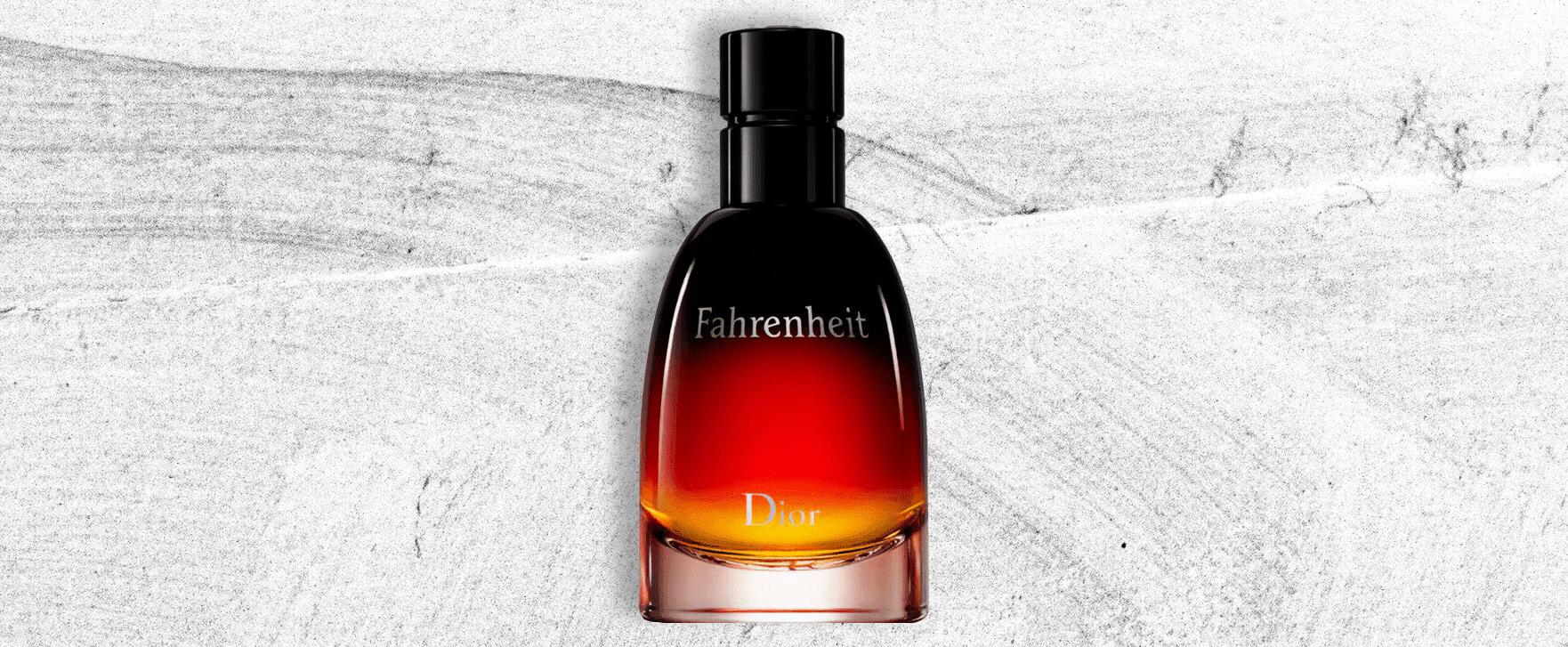
Fahrenheit - a perfume on a Different Scale
Fahrenheit is a monument - but it didn't spring from nowhere. Like most great art it had its genesis in what went before and was a product of its time.
Fahrenheit is an eighties perfume and is typically bold, and it can be overpowering if too much is used. But in most ways Fahrenheit is not typical at all.
Maurice Roger, who was Dior's Director of Perfumery at the time was not content to turn out bland and samey works that copied the market; as he liked to say - I want less testing and more testicles.
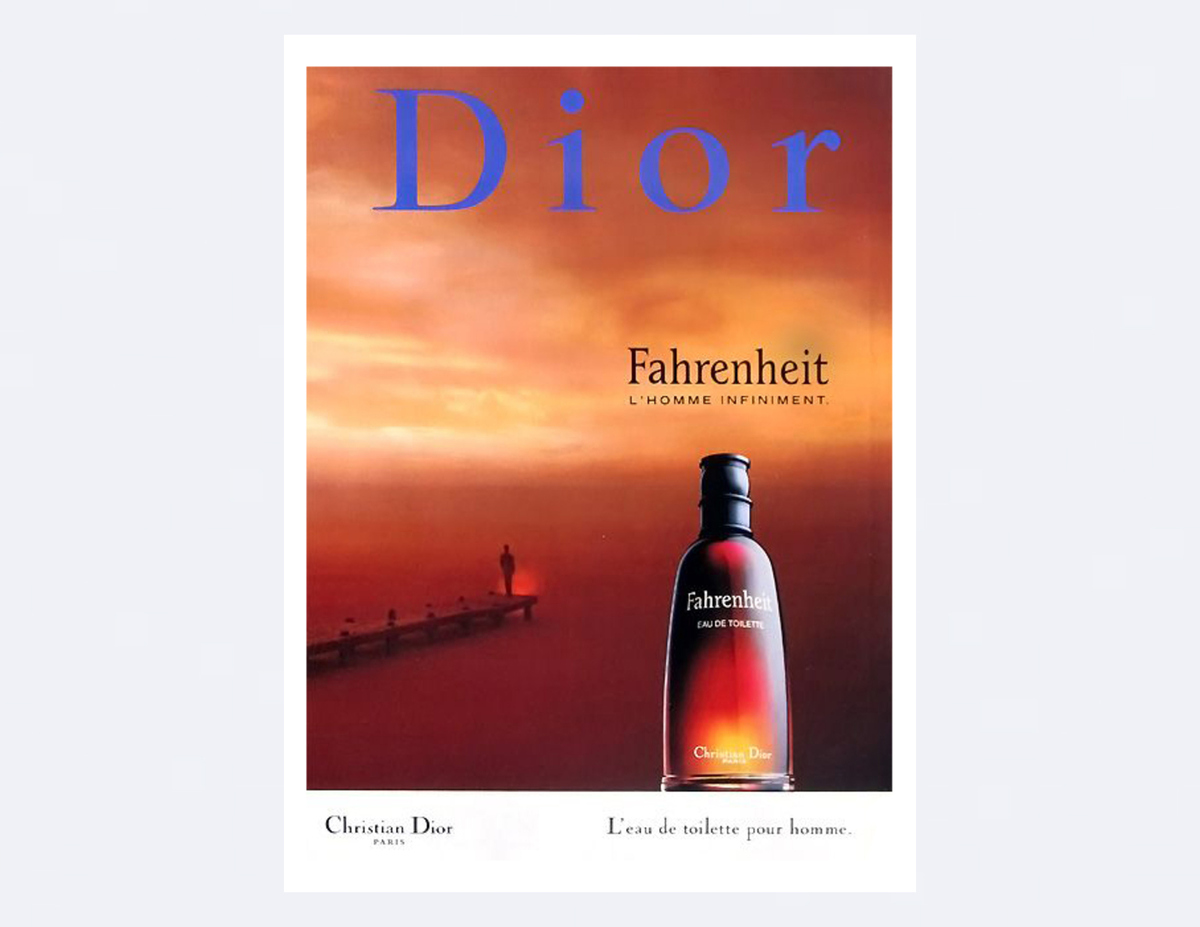
The brief was given to Jean Louis Sieuzac, who composed what would become Fahrenheit, and his oeuvre is a good place to start when looking at this singular perfume.
Sieuzac wasn't a prolific composer and has only twenty works on the Parfumo database, but among them are several top class perfumes: Opium, Dune, Oscar and the new Madame Rochas, all of them excellent and ahead of their time. Sieuzac was innovative as well as a great technician, and of course, he composed Fahrenheit.
Fahrenheit is the final scent in a trilogy that Sieuzac composed between 1981 and 1988. They are in different genres; a fougère, a leather and a green fragrance, but they share a constellation of notes and revolve around the same dark and brooding theme.
There is a clear - if rather complex - development across the trilogy that reaches a climax with Fahrenheit. Because the evolution of Sieuzac's work is not linear (he composed other unrelated works during this period) it pays to look at the trilogy in a wider context - which includes historical as well as contemporary influences. In this way it becomes easier to chart the course of how the perfumer's ideas may have developed. I say 'may have' because without corroboration from Sieuzac or Maurice Roger it's hard to be sure. The best one can do is make an educated guess.
The historical roots
Black leather and Violets - the two pillars of Fahrenheit
The roots of Fahrenheit go back to long before Sieuzac started his career; its origins can be found in the mid twentieth century with the work of Germaine Cellier. Like Sieuzac, Cellier was a perfumer who produced few works, but the ones she did release are often audacious and among the true greats of perfume history. It is in her work that we find not just one - but both the pillars of Fahrenheit.
The first one is Bandit (1944).
With its hard black leather, bitter flowers and aromatic flourish, Bandit is a model for the dark intense base of Fahrenheit. Both perfumes are dark, intense and have great presence.
The other one is Jolie Madame (1953) - which took the Early Modern (c. 1910) convention of rose - violets, and replaced it with dry violets and a brown leather amber.
Fahrenheit is sometimes characterised as Violets and Engine Oil, and in the combination of these two classic perfumes we already have its basic structure.
Jolie Madame appeared some 35 years before Fahrenheit, which is the working life of a perfumer in France - if they leave perfumery school at 25 and retire at 62. A lot of innovation can happen during a lifetime and there are several more influences (or similarities) that can we can see in Fahrenheit.
A masculine Violet
Violet is a notable part of Jolie Madame but the story doesn't end there, the flower was picked up - and recast as a masculine - by André Fromentin in 1975. With slightly ambered musk and raspy violet, Grey Flannel is drier than a Private Eye's raincoat. Unsweet and austere, it has sometimes been compared to Fahrenheit and seen as its forerunner.
The other flowers
The florals in Fahrenheit are an unusual blend of thin citrusy honeysuckle and the dry, raspy and unpleasant smell of hawthorn. This is one element of the profile that is not found anywhere else.
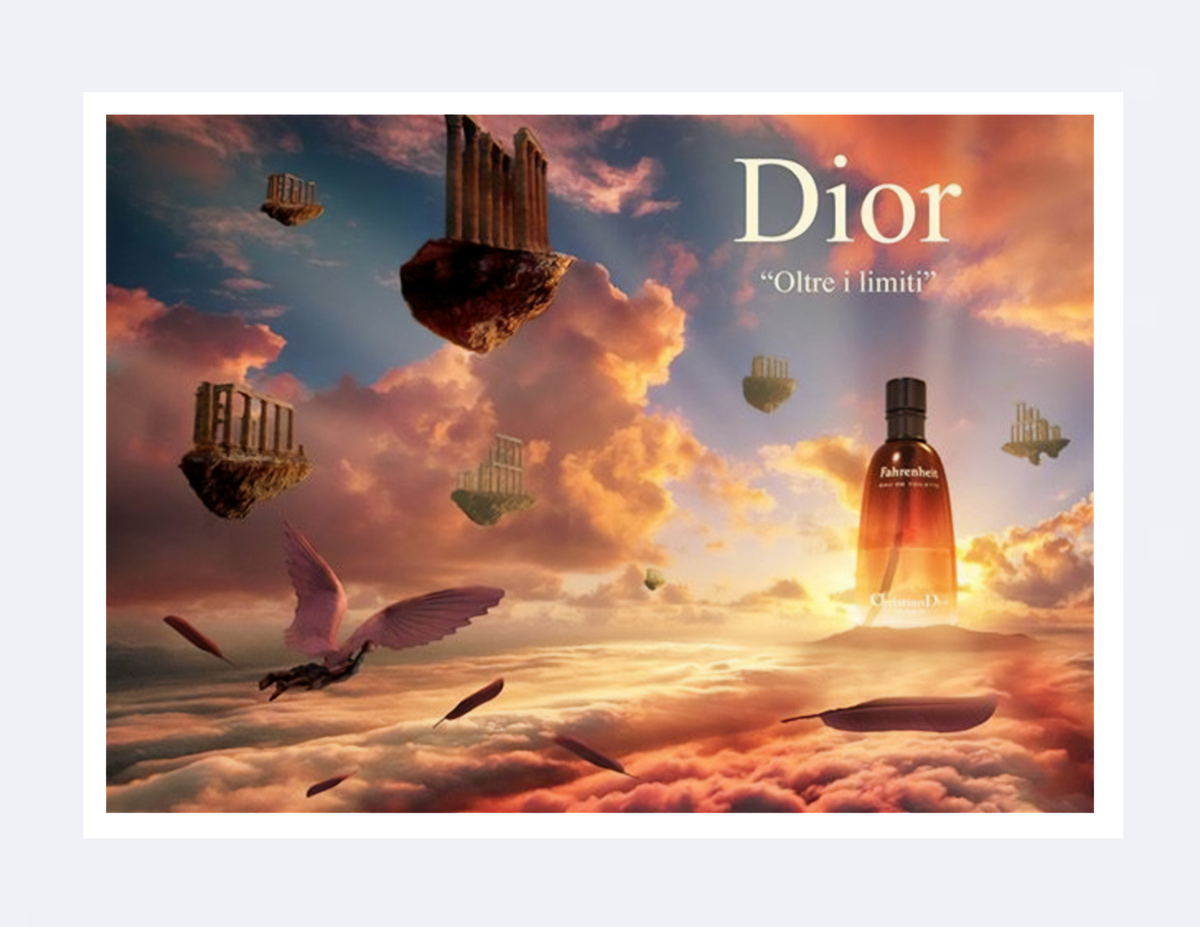
The modifiers
The next influence is the citrus-aromatic rainbow found at the head of Aramis (1965) which has a robust leather underpinning (by way of Cabochard which is also by Bernard Chant, 1959).
The head notes in Fahrenheit are not a direct lift from Aramis though, they are more acrid and fizzy; which recalls the texture of salicylates found in L'Air du Temps (Francis Fabron, 1948).
There is also the clear presence of eugenol (clove alcohol) in the form of either mace or nutmeg, which is relates to the dry spicy carnation of L'Air du Temps.
The other element is violet leaf which has herbaceous, green and cucumber facets.
The vital innovation
Fahrenheit would certainly not be the same without violets - and violet leaf, and they are either augmented by, or substituted with, the one element that every great innovation will have, a new perfume material. With Fougère Royale it was the newly synthesised coumarin, for Coty's Chypre it was isobutyl quinoline (Mousse de Saxe) and for Fahrenheit it's Methyl Octine Carbonate, which goodscentscompany.com describes as floral, green, violet leaf, melon and cucumber.
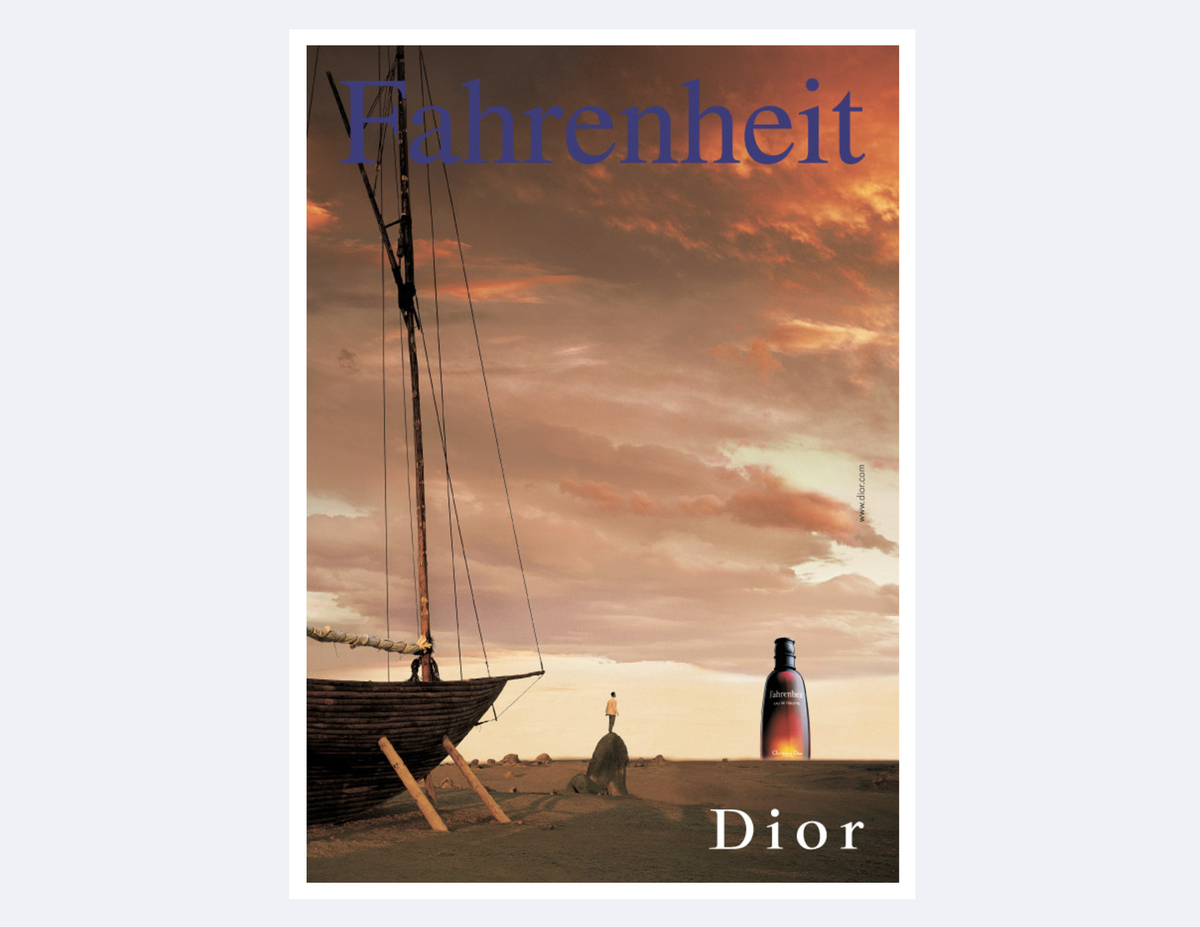
The watery cucumber and melon nuances help to lift and balance the next facet we come to, the green chypre.
Back to base - the Green Chypre
Although it may seem a bit arbitrary, Fahrenheit is called a green perfume, and green is certainly one of its aspects. A dark - very dark - green can be found in Silences (Yves Tanguy, 1978). It's a dark chypre with a dry pink floral, more green than Fahrenheit, and with a dark bitter baseline - which is acrid but also smooth; which would help explain the note of engine oil said to be in Fahrenheit.
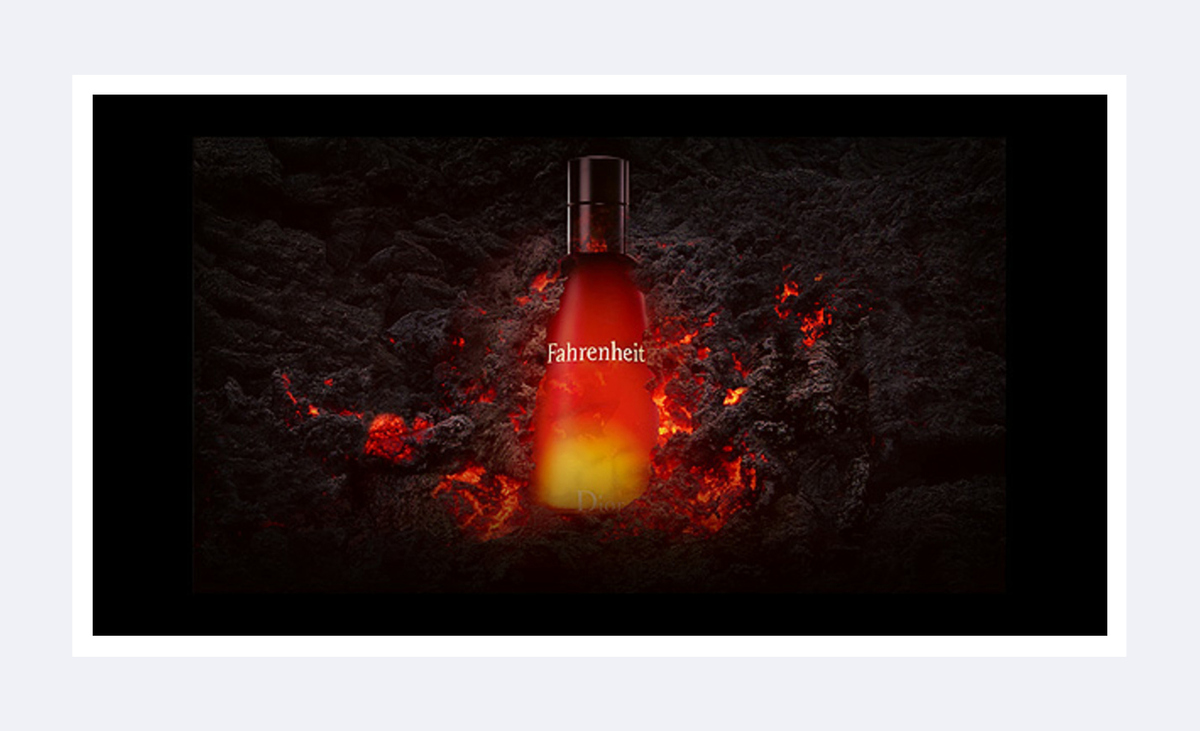
It is sometimes called Gasoline, but in my opinion engine oil is closer. If you have ever spent time in a car repair workshop - or maybe even better - a biker's shed, you'll know what I mean.
Green - and Plum
Fahrenheit's green note is not markedly green. To neutralise the green tonality it's mixed with a dark fruity plum, a kind of 'salt plum' which - even though it's difficult to isolate - can be felt in Femme de Rochas (originally 1944, Edmond Roudnitska). Femme is a black leather floral chypre, although with its large creamy peach note it could hardly be less like Fahrenheit. The connection is there all the same - I believe.
The contemporary context
Now I want to look at the way that Jean Louis Sieuzac's work developed during the period he was working on the Fahrenheit trilogy, and also - to give a broader context - some perfumes that appeared during that time, which may have been a response to his work, or may have influenced its future development.
Or Black (1981)
Sieuzac began with what Luca Turin calls a saturnine fougère (Perfumes: The Guide). Being a fougère, Or Black doesn't have the depth or the audacious intensity of Fahrenheit. It's thinner and less heavy - although it's still very dark - and has a chewy sweet base. It is the ultimate dark fougère, which - as Turin says - outdoes Rive Gauche pour Homme in intensity (although that actually came later in 2003 - Jacques Cavallier-Belletrud).
Of course, something like Or Black wouldn't go unnoticed, and in 1984 Jean-Marc Sinan released Version Originale (anonymous perfumer) - which is ironic because it's not original at all. It's a close copy of Or Black: very dark, but thicker and with a smooth and ambery-bitter feel, aromatic and green. It contains an accord that smells a bit like black hash, which could be thought original for the time, but this heavy dark fougère with a bitter undertow - which draws on the classic green chypres of the seventies - could be read as a testament to Or Black, or - more prosaically - just cashing in.
Bel Ami (1986)
Bel Ami was a commission by Hermès and so had to be a leather - that being their policy at the time. Perhaps it was the constraints imposed by Hermès but Bel Ami was a change of direction for Sieuzac. It's sweet and soft, a brown spicy-amber leather with a very different feel to the rather austere and - by comparison - fruity aromatic-fougère of Or Black.
Those who have read Bel Ami - the novel by Guy Maupassant - will know it deals with a milieu of wealth and privilege, which obliges a perfume of the same name to have a conservative and conventional tone - which is quite different to what is often found in the work of Sieuzac. It's a world of monogrammed leather slippers; a plush salon lined with the walnut burr you find on the box of modern Aramis. And, along with the soft brown leather, aromatics, and a fair dose of chewy amber, there's a crackle of spices and moss which does -slightly- recall the Bernard Chant classic.
Bel Ami, through Giorgio VIP to Fahrenheit : From brown to black
The sweet spiciness of Bel Ami was then picked up by Giorgio Beverly Hills with their VIP Special Reserve (anon - 1987). It's a darker, woody amber fragrance with a strong note of cardamom (which takes us towards Déclaration, and away from the path we are following). But the darkness of VIP - which is in a black 'Giorgio for Men' bottle - leads us on to Fahrenheit (1988). Inevitably - for such a tenebrous perfume – Fahrenheit was also in a black bottle, but here it's also partly red - for Red Hot - which refers to the temperature scale invented by the Polish born scientist Herr Fahrenheit.
Having said how dark it is, it's notable that, on a paper strip, Fahrenheit develops a spangly silver tone in the base - which is much better than the ill defined musky depths of Or Black.
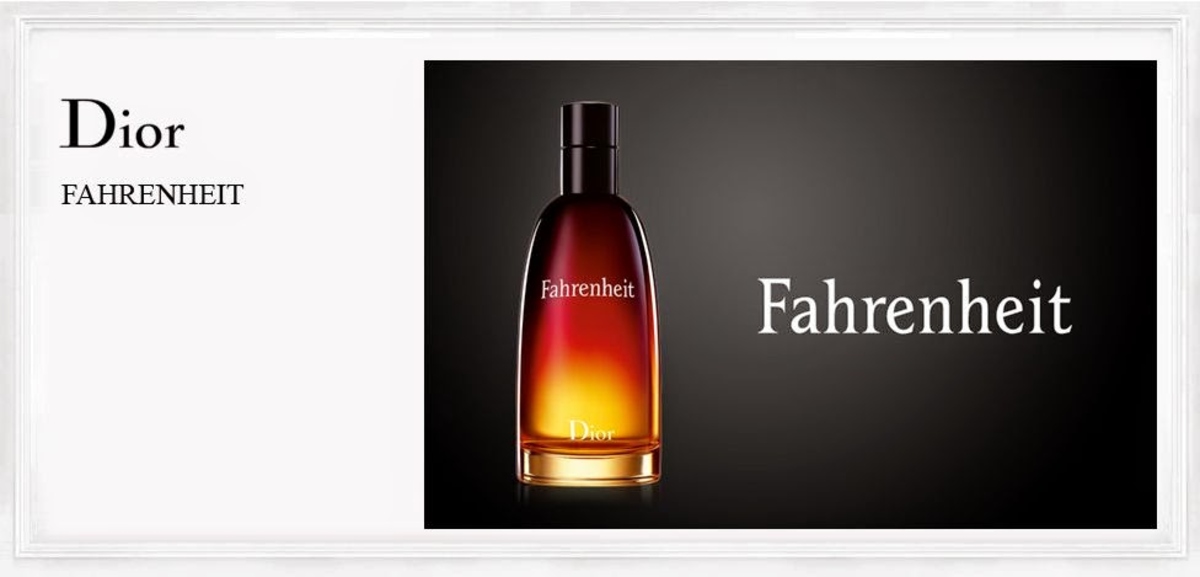
The monolithic style
It's important to mention a new style of perfumery that was emerging around that time - because it influenced the structure of Fahrenheit. This monolithic style is associated with the work of Sophia Grojsman - who is thought to have developed it.
Trésor is probably the best example. It contains 'approximately equal amounts of Hedione, Iso E super, Galaxolide and methyl ionone, which make up some 80% of the formula'. (Perfumery : Calkin & Jellinek). Trésor was released after Fahrenheit in 1990, but it's a great example of where perfumery was heading. In place of traditional head - heart - base structures, perfumes were more and more based around large blocks of long lasting molecules with similar volatilities, making them linear but very stable. Calvin & Jellinek call this style 'luxury soap fragrance'.
Fahrenheit was not a full blown monolith but it did - according to independent perfumer Paul Kiler - contain 25% Iso E super and 11% Tonalid, which is similar to Grojsman's production of the same year Eternity, which uses benzyl salicylate and Iso E super at around 25% of the formula (Calkin & Jellinek). It's reasonable to assume that Grojsman was the one leading the way here and Sieuzac was adapting his method to this new development in perfumery.
Fahrenheit: derivative or masterpiece?
The picture of Fahrenheit that emerges is of a perfume that appears to borrow heavily from classic works of the past, and was influenced by new works and methods in contemporary practice. So it's reasonable to ask, aside from a new molecule, was there anything original in Fahrenheit? Shakespeare has Polonoius say "neither a borrower nor a lender be", so where does that leave the legacy of Sieuzac? Is Fahrenheit just a fortuitous mix of other people's ideas, and him just a talented plagiarist?
I believe not.
Fahrenheit has similar aromatics, similar violet, a similar darkness to previous scents, but it's like a highly tuned engine, the parts work together with a synergy that makes them force multipliers. I think this is more than just skillful blending and fine balance. As Dominique Ropion has written in Aphorismes d'un parfumeur, sometimes a formula reaches a moment when it all comes together and seems to go beyond. For a great perfumer - at the height of their powers - it’s possible to go beyond, beyond the line from Very Good to Masterpiece, and here we have gone beyond.
The experience I get from smelling Fahrenheit - against the other (vintage) samples in this study - is one of a different order. It has an overwhelming force and emotional intensity that is only found in the finest of works.
Just as Hamlet doesn't lose its dark power because it's based on the legend of Amleth, so Fahrenheit is no less of a tour de force when you find its not as original as you thought.


 BrianBuchanan
BrianBuchanan
